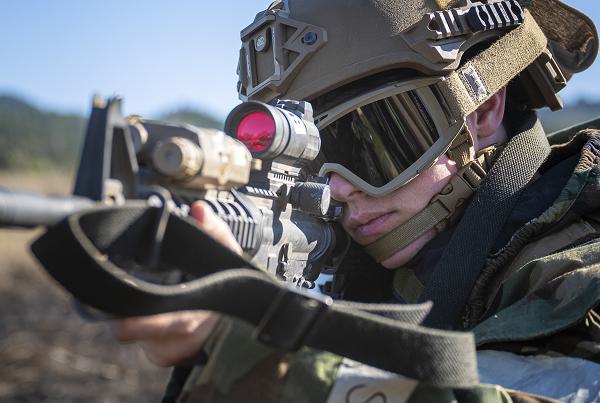
Fort Hunter-Liggett, California. (August 10, 2024): The U.S. military has adopted a new generation of infantry rifle that owes a great deal to its predecessor, the reliable M-16A1. In this photo by Staff Sergeant Scott Warner, Staff Sergeant Miles Winford, an 821st Contingency Response Squadron weather technician, aims his M-4 carbine during a training exercise. The M-4 is a shorter and lighter variant of the M16 rifle with remarkably similar operating mechanisms that share roughly 80 percent of the same parts. Developed in the 1980s, the M4's design was based on shortening the barrel length from 20 to 14.5 inches without compromising long-range accuracy.
Some of the upgraded features of the M-4 include a faster firing action, a setting for a three-shot pattern, and additional accessories like flash suppressors, silencers, and grenade launchers. It also comes with a collapsible stock making the weapon better suited for an urban environment. It holds thirty bullets, and it is somewhat easier to switch out magazines than the M16. The shortened barrel length makes the rifle lighter than the M-16 (7 v. 9 pounds) although accessories can practically double that weight.
Finally, the M-4 has a much longer service life than other assault rifles and is reasonably priced at $1,250 per unit. By drawing upon the lessons learned from the M-16, America’s military now has a much-improved basic infantry weapon.
From M-16 To M-4: A Tale Of Two Rifles
- Details
- Hits: 2154


